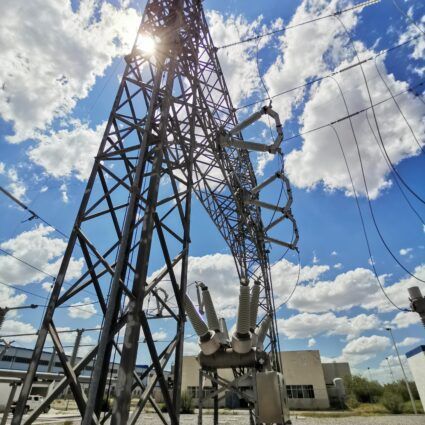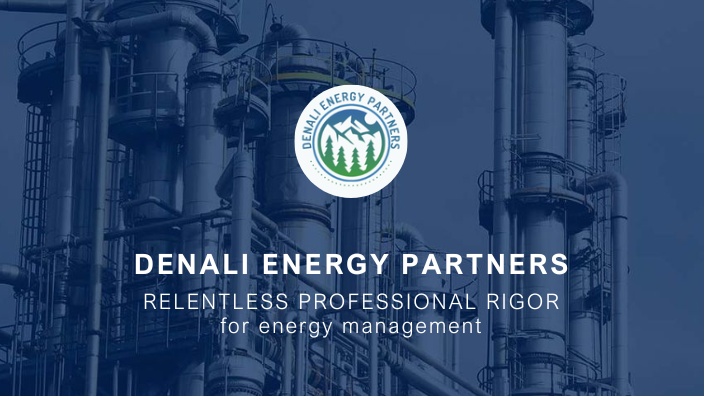What Are the Benefits of Carbon Credits for Industrial Parks?
Denali-ep
| 16 de octubre de 2024
What Are the Benefits of Carbon Credits for Industrial Parks?
Introduction
In a world where sustainability has become a priority, carbon credits emerge as a key tool for industrial parks. These credits not only allow industrial parks to offset their greenhouse gas emissions but also offer a range of financial and strategic benefits that can transform the operation and image of these industrial complexes.
Financial Benefits
Reduction of Operating Costs
Carbon credits can significantly reduce operating costs for industrial parks. By participating in offset projects and obtaining credits, parks can generate additional revenue, which can be reinvested into operational improvements and process optimization.
Tax Incentives and Subsidies
Many governments offer tax incentives and subsidies to companies that implement emission reduction programs. For industrial parks, this could mean tax deductions, exemptions, and other financial benefits that help offset the costs of sustainability investments.
Competitive Advantages
Improvement of Corporate Image
Adopting carbon credits can enhance the corporate image of an industrial park. Demonstrating a commitment to emission reduction reinforces a positive perception among clients, partners, and the community, which can translate into greater trust and support.
Market Differentiation
In a competitive environment, differentiation is crucial. Industrial parks that implement carbon credits can stand out by offering more sustainable operations. This not only attracts businesses interested in green practices but also opens up new business opportunities in markets that value sustainability.
Regulatory Compliance
Adaptation to Environmental Regulations
Environmental regulations are constantly changing, and industrial parks must adapt to meet new standards. Carbon credits help parks meet emission reduction requirements set by authorities, ensuring compliance with environmental laws.
Avoidance of Fines and Penalties
By complying with regulations through the purchase of carbon credits, industrial parks can avoid costly fines and penalties. This not only protects the company from financial penalties but also ensures uninterrupted operations.

Impact on Sustainability
Contribution to Sustainability Goals
The adoption of carbon credits helps industrial parks meet their sustainability goals. Investing in projects that reduce emissions contributes to achieving environmental targets and improving the park’s ecological footprint.
Improved Energy Efficiency
Projects that generate carbon credits often include technological and operational improvements that increase energy efficiency. For industrial parks, this means a reduction in energy consumption and lower associated costs.
Investment in Innovation
Incentive for Green Projects
The possibility of obtaining carbon credits stimulates investment in green projects. Industrial parks can fund initiatives such as renewable energy and waste management, fostering a greener and more sustainable environment.
Promotion of New Technologies
The pursuit of carbon credits also promotes the development and adoption of new technologies. Companies are motivated to innovate and implement technological solutions that reduce emissions, leading to significant advances in the industrial sector.
Relationships with Investors
Attraction of Responsible Investors
Investors are increasingly interested in supporting companies that demonstrate a commitment to sustainability. By adopting carbon credits, industrial parks can attract responsible investors who seek to back businesses with strong environmental practices.
Strengthening Business Reputation
A solid reputation for sustainability can strengthen relationships with investors and other stakeholders. Industrial parks that lead in carbon reduction practices are viewed favorably, which can result in increased financial and strategic support.
Community Benefits
Development of Local Projects
Carbon credits often fund projects that benefit local communities. These projects can include reforestation, the construction of green infrastructure, and improvements in air quality, contributing to the sustainable development of surrounding areas.
Job Creation and Regional Development
In addition to positive environmental impacts, projects funded by carbon credits can create jobs and stimulate regional development. This is especially relevant in areas dependent on industries related to the environment and energy.
Success Stories in Industrial Parks
Examples of Parks Leveraging Carbon Credits
There are numerous examples of industrial parks that have capitalized on carbon credits to improve their sustainability and profitability. These success stories offer valuable lessons on how to implement effective carbon credit strategies.
Lessons Learned
Case studies provide insight into best practices and strategies that have worked in the past. These lessons can guide other industrial parks in the adoption and management of carbon credits more effectively.
Challenges and Considerations
Initial Costs and Credit Management
Implementing a carbon credit program can involve initial costs and ongoing management. Industrial parks must be prepared to face these challenges and plan accordingly to ensure the benefits outweigh the costs.
Associated Risks and How to Mitigate Them
There are risks associated with the implementation of carbon credits, such as market price fluctuations and potential fraud. It is important to select accredited projects and maintain constant oversight to mitigate these risks.
Future of Carbon Credits in Industrial Parks
Emerging Trends and Expected Changes
The carbon credit market is constantly evolving, with new trends and regulatory changes that can affect their value and availability. Industrial parks must stay informed about these trends to adapt their strategies and continue reaping the benefits.
Long-Term Impact on Industrial Parks
As the adoption of carbon credits expands, we are likely to see a lasting impact on industrial parks. This includes greater integration of sustainable practices and a transformation toward a greener business model.
How to Implement a Carbon Credit Program in Industrial Parks
Steps to Integrate Carbon Credits into the Park’s Strategy
To implement a carbon credit program in an industrial park, it is essential to follow several strategic steps:
- Carbon Footprint Assessment: Measure the park’s carbon footprint to identify areas for improvement and determine the number of credits needed.
- Selection of Offset Projects: Choose certified and reliable offset projects that align with the park’s goals.
- Purchase and Registration of Credits: Acquire the necessary carbon credits through certified markets and ensure they are properly registered to avoid duplication or fraud.
- Integration into the Park’s Strategy: Incorporate carbon credits into the overall industrial park strategy, aligning credit purchases with sustainability and energy efficiency goals.
- Monitoring and Evaluation: Continuously track the impact of carbon credits on park operations, including periodic review of emission reduction reports and adjusting strategies as needed.
- Communication and Transparency: Maintain open communication about carbon credit efforts and results. Inform stakeholders of the positive impact these credits have and how they contribute to the park’s sustainability.
Resources and Available Tools
Certification Platforms for Credits
To ensure the validity and effectiveness of carbon credits, it is essential to use recognized certification platforms, such as the Verified Carbon Standard (VCS) and the Gold Standard. These platforms certify that projects meet the necessary requirements to issue carbon credits and provide a framework of trust for buyers.
Specialized Consultants
Working with consultants specialized in sustainability and carbon management can facilitate the implementation of a carbon credit program. These experts can assist in the assessment of the carbon footprint, selection of offset projects, and the management of credit purchases and registration.
Monitoring Software
There are software tools designed to help industrial parks monitor their carbon footprint and the impact of acquired credits. These tools allow for detailed reporting, data analysis, and efficient management of emission reductions.
Here’s the continuation:
Relationships with Investors
Attraction of Responsible Investors
Investors are increasingly interested in supporting companies that demonstrate a commitment to sustainability. By adopting carbon credits, industrial parks can attract responsible investors who seek to back businesses with strong environmental practices.
Strengthening Business Reputation
A solid reputation for sustainability can strengthen relationships with investors and other stakeholders. Industrial parks that lead in carbon reduction practices are viewed favorably, which can result in increased financial and strategic support.
Community Benefits
Development of Local Projects
Carbon credits often fund projects that benefit local communities. These projects can include reforestation, the construction of green infrastructure, and improvements in air quality, contributing to the sustainable development of surrounding areas.
Job Creation and Regional Development
In addition to positive environmental impacts, projects funded by carbon credits can create jobs and stimulate regional development. This is especially relevant in areas dependent on industries related to the environment and energy.
Success Stories in Industrial Parks
Examples of Parks Leveraging Carbon Credits
There are numerous examples of industrial parks that have capitalized on carbon credits to improve their sustainability and profitability. These success stories offer valuable lessons on how to implement effective carbon credit strategies.
Lessons Learned
Case studies provide insight into best practices and strategies that have worked in the past.
These lessons can guide other industrial parks in the adoption and management of carbon credits more effectively.
Challenges and Considerations
Initial Costs and Credit Management
Implementing a carbon credit program can involve initial costs and ongoing management. Industrial parks must be prepared to face these challenges and plan accordingly to ensure the benefits outweigh the costs.
Associated Risks and How to Mitigate Them
There are risks associated with the implementation of carbon credits, such as market price fluctuations and potential fraud. It is important to select accredited projects and maintain constant oversight to mitigate these risks.
Future of Carbon Credits in Industrial Parks
Emerging Trends and Expected Changes
The carbon credit market is constantly evolving, with new trends and regulatory changes that can affect their value and availability. Industrial parks must stay informed about these trends to adapt their strategies and continue reaping the benefits.
Long-Term Impact on Industrial Parks
As the adoption of carbon credits expands, we are likely to see a lasting impact on industrial parks. This includes greater integration of sustainable practices and a transformation toward a greener business model.
How to Implement a Carbon Credit Program in Industrial Parks
Steps to Integrate Carbon Credits into the Park’s Strategy
To implement a carbon credit program in an industrial park, it is essential to follow several strategic steps:
- Carbon Footprint Assessment: Measure the park’s carbon footprint to identify areas for improvement and determine the number of credits needed.
- Selection of Offset Projects: Choose certified and reliable offset projects that align with the park’s goals.
- Purchase and Registration of Credits: Acquire the necessary carbon credits through certified markets and ensure they are properly registered to avoid duplication or fraud.
- Integration into the Park’s Strategy: Incorporate carbon credits into the overall industrial park strategy, aligning credit purchases with sustainability and energy efficiency goals.
- Monitoring and Evaluation: Continuously track the impact of carbon credits on park operations, including periodic review of emission reduction reports and adjusting strategies as needed.
- Communication and Transparency: Maintain open communication about carbon credit efforts and results. Inform stakeholders of the positive impact these credits have and how they contribute to the park’s sustainability.
Resources and Available Tools
Certification Platforms for Credits
To ensure the validity and effectiveness of carbon credits, it is essential to use recognized certification platforms, such as the Verified Carbon Standard (VCS) and the Gold Standard. These platforms certify that projects meet the necessary requirements to issue carbon credits and provide a framework of trust for buyers.
Specialized Consultants
Working with consultants specialized in sustainability and carbon management can facilitate the implementation of a carbon credit program. These experts can assist in the assessment of the carbon footprint, selection of offset projects, and the management of credit purchases and registration.
Monitoring Software
There are software tools designed to help industrial parks monitor their carbon footprint and the impact of acquired credits. These tools allow for detailed reporting, data analysis, and efficient management of emission reductions.
Conclusion
Carbon credits represent a significant opportunity for industrial parks, providing financial, strategic, and operational benefits. From reducing operational costs and enhancing corporate image to regulatory compliance and fostering innovation, carbon credits can transform the operation of an industrial park and contribute to its sustainability goals.
Adopting carbon credits not only helps industrial parks reduce their environmental impact but can also provide a competitive edge in a market increasingly focused on sustainability. With proper planning and effective implementation, carbon credits can be a key tool in advancing toward a greener, more responsible business model.
What are carbon credits, and how do they benefit industrial parks?
Carbon credits are permits that allow an entity to emit a certain amount of greenhouse gases, typically one ton of CO2. Industrial parks can purchase these credits to offset their emissions by funding projects that reduce or remove carbon elsewhere. This helps parks meet sustainability goals, improve their corporate image, and comply with environmental regulations while reducing operational costs through tax incentives and new revenue streams.
How can carbon credits help industrial parks reduce operational costs?
By participating in carbon offset projects and earning or purchasing carbon credits, industrial parks can generate additional income or reduce their carbon footprint without significant infrastructure investments. The funds from these credits can be reinvested into energy efficiency projects, which lower utility costs, and parks may also benefit from government tax incentives designed to reward emission reductions.
Are there any risks associated with implementing carbon credit programs in industrial parks?
Yes, some risks include fluctuations in carbon credit market prices and potential fraud in unverified projects. To mitigate these risks, industrial parks should purchase credits through accredited platforms like Verified Carbon Standard (VCS) and ensure continuous monitoring and reporting of their emission reductions. Additionally, parks need to evaluate the initial costs and have a solid plan for managing credits long-term.
How do carbon credits improve the reputation of an industrial park?
By adopting carbon credits, industrial parks show a commitment to reducing their environmental impact, which enhances their reputation as sustainable leaders. This can improve relationships with investors, attract environmentally-conscious clients, and foster goodwill within the local community. It also strengthens the park's position in competitive markets where sustainability is increasingly valued.
How can industrial parks implement a carbon credit program?
To implement a carbon credit program, industrial parks should first assess their carbon footprint to identify areas for improvement. Then, they can select certified offset projects, purchase the necessary credits, and integrate the program into their overall sustainability strategy. Monitoring and transparent communication about the program’s results are key to its long-term success.




